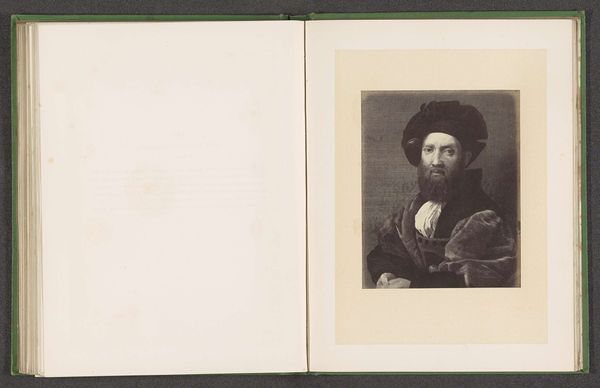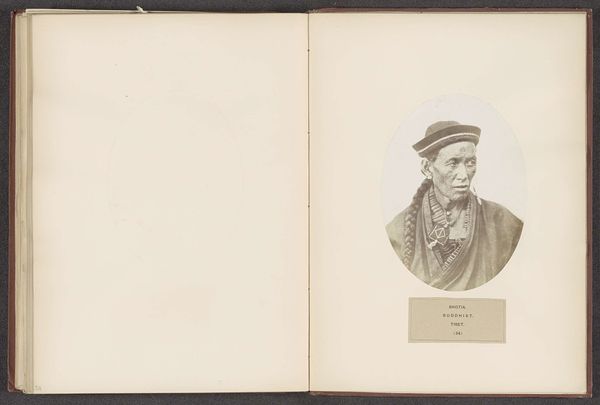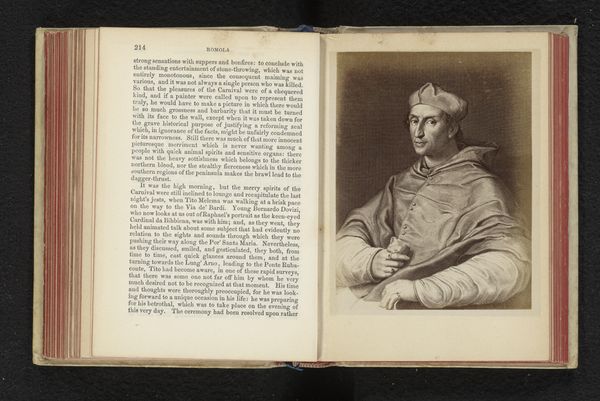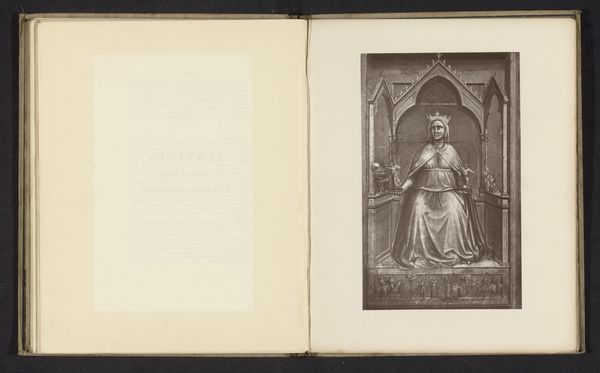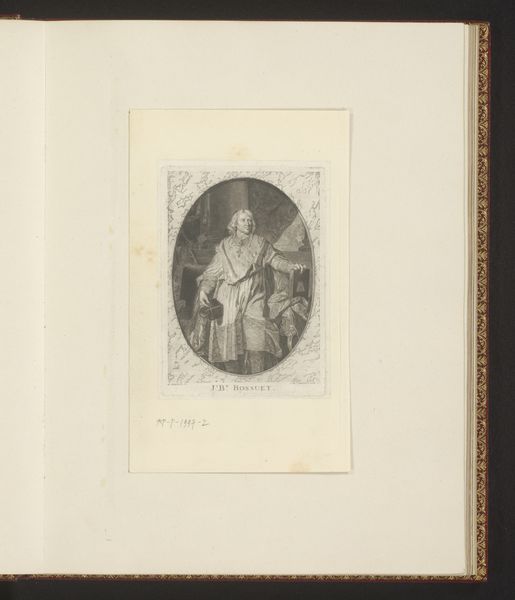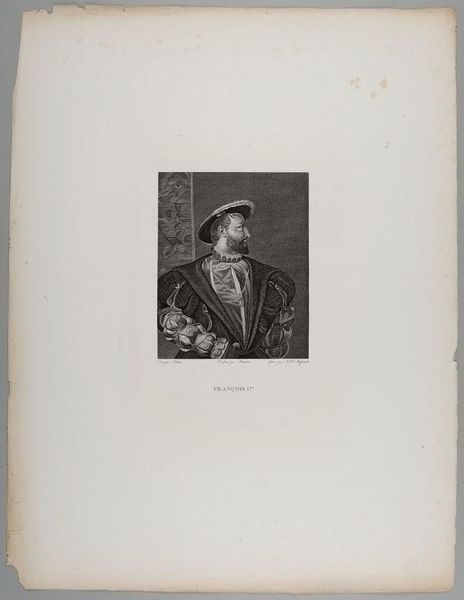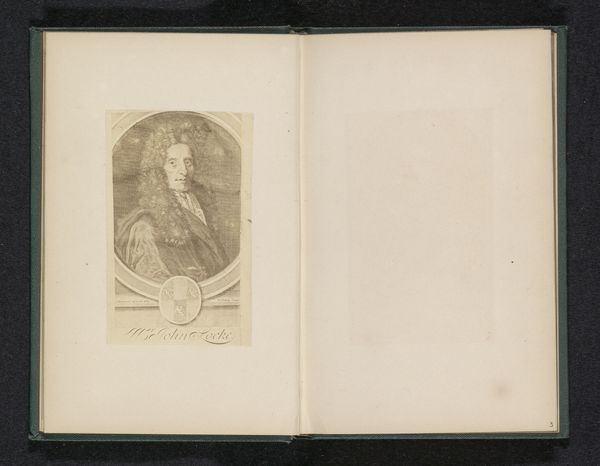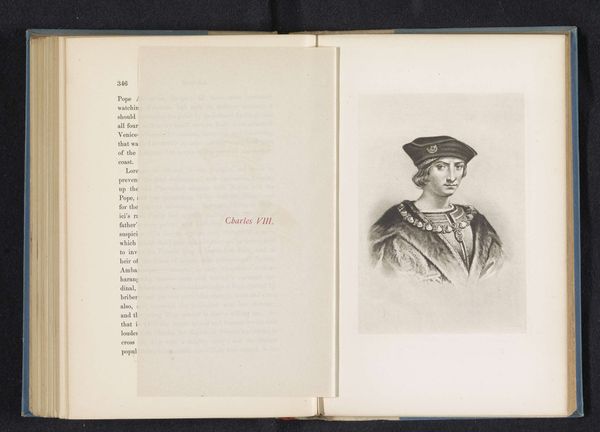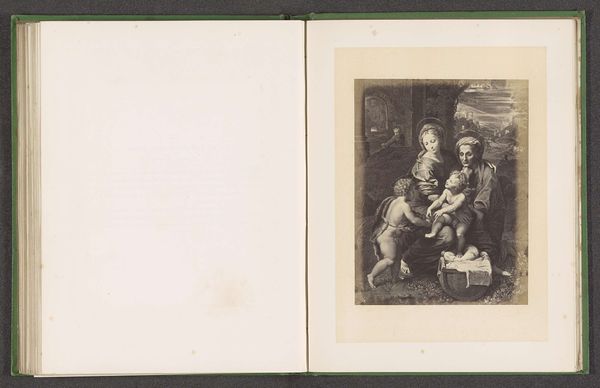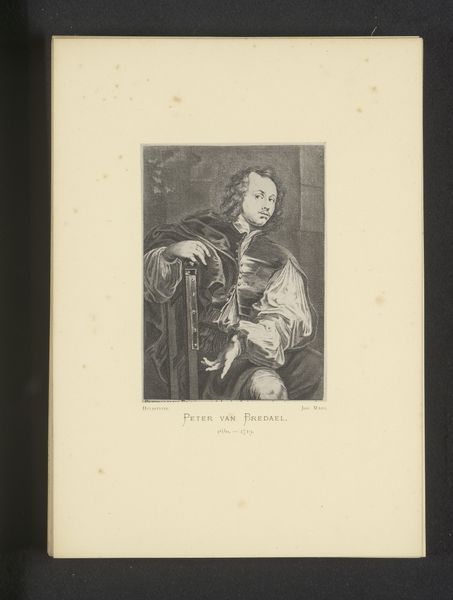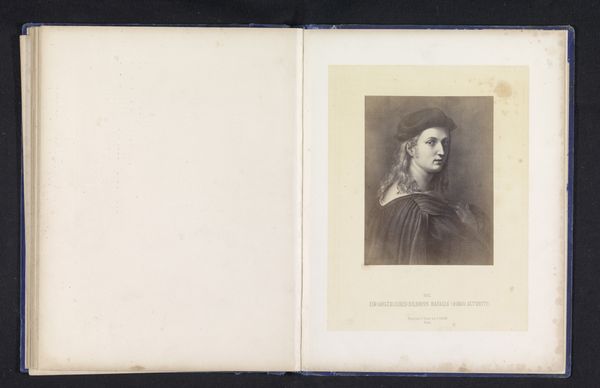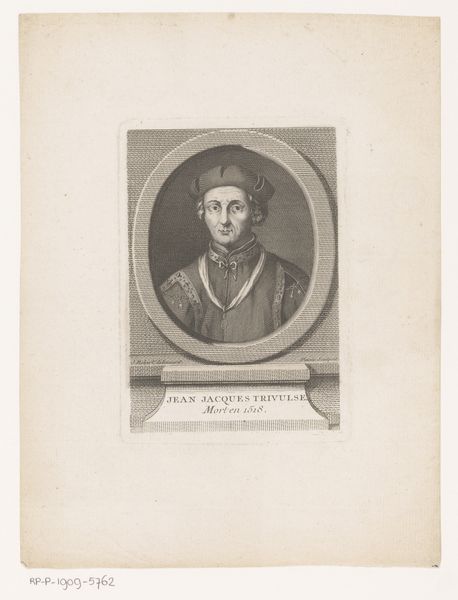
Fotoreproductie van een prent door Ludwig Gruner van een portret van kardinaal Bibbiena door Rafaël before 1869
0:00
0:00
#
portrait
# print
#
11_renaissance
#
italian-renaissance
Dimensions: height 164 mm, width 128 mm
Copyright: Rijks Museum: Open Domain
Curator: This photomechanical print captures a portrait of Cardinal Bibbiena after Raphael. It's attributed to Ludwig Gruner, sometime before 1869. Editor: He has such a severe gaze, doesn’t he? As if he is perpetually judging my choice of footwear… but also maybe a touch of melancholy? Curator: Portraits during the Italian Renaissance certainly conveyed status and authority. However, a key aspect of the portrait is to go beyond external representation, alluding to a person's inner qualities. Think about the symbolism imbued in their posture and expression. A visual language instantly recognized at the time. Editor: Absolutely! The way his robe drapes... those fine, tight lines give an overall impression of someone powerful yet burdened, weighed down perhaps by earthly concerns. I mean, just look at how he clutches those delicate folds around his sleeves! Is he anxious? Introspective? Or is that just indigestion? Curator: Ha! Possibly both. We also should keep in mind that we are seeing this image through layers – Raphael’s original vision, Gruner’s interpretation in printmaking, and the photographic reproduction of that print. Cultural memory operates here at several removes, and the print’s medium undoubtedly shaped its emotional resonance. Editor: That's so true. It's a portrait of a portrait. A ghost in the machine. Makes you wonder about the essence of representation itself. Is anything "real," or are we just passing copies along until the original inspiration fades? Curator: Precisely! These prints circulated widely, shaping perceptions of historical figures. They served as more than just a likeness; they were mnemonic devices, carrying stories and beliefs through time. Editor: So, we have this image not only speaking to power, authority, melancholia, the artist’s ability to represent, but to the cultural significance of how artworks are reproduced. How the image itself is replicated through history, each copy taking on new meaning with the passage of time. Wow. Curator: Indeed, these seemingly straightforward reproductions contain universes within them, which speaks to the long lives images lead in culture. Editor: Well, I never expected to feel so philosophical gazing at a reproduction today, but I think I get it. Now I feel the urge to get my portrait done as a photomechanical print!
Comments
No comments
Be the first to comment and join the conversation on the ultimate creative platform.
